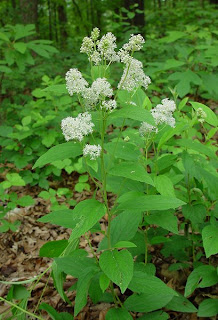LADY'S MANTLE

Latin Name: Alchemilla vulgaris
Alternate Names: Dewcup, Our Lady's Mantle, Lion's Foot, Bear's Foot
Family: ROSACEAE
Parts Used: Leaves, flowering shoots.
Properties: Anti-inflammatory, Astringent, Diuretic, Emmenagogue, Febrifuge, Hemostatic, Liver Decongestant, Styptic, Vulnerary, Tonic.
Internal Uses: Diarrhea, Dysmenorrhea, Hemorrhage, Menorrhagia, Postpartum Hemorrhage, Rheumatism
Internal Applications: Tea, Tincture, Capsules.
Lady's Mantle aids blood coagulation and promotes tissue healing. It reduces inflammation and clears heat.
Topical Uses: Acne, Conjunctivitis, Freckles, Laryngitis, Leukorrhea, Mouth Sores, Skin Dryness, Vaginal Discharge, Vaginitis, Wounds
Topical Applications: Poultice for wounds. Bolus for vaginal discharge, douche for vaginal infection and leukorrhea. Enema. Eyewash for conjunctivitis, mouthwash for sores and following tooth extraction. Gargle for laryngitis. Juice and facial steam for acne. Lotion to soften rough skin and to lighten freckles and birthmarks.
Culinary uses: Young leaves are added to salads.
Energetics: Bitter, Cool, Dry.
Chemical Constituents: Tannin (ellagic acid), salicylic acid, saponins, phytosterols, essential oil, bitter principle.
Contraindications: Avoid during pregnancy, except that it can be taken 10 days before expected birth in order to prevent excessive bleeding.
Comments: The genus name, Alchemilla, is from the Arabic, alkemelych, meaning 'alchemy', as alchemists believed that the crystal dewdrops of this plant held magical powers to help them. The common name, Lady's Mantle, refers to a woman's cloak, presumably the Virgin Mary's. This herb was used to staunch bleeding on the battlefields of the 15th and 16th centuries. At one time, the astringent effects of this plant were marketed as a virginity restorative.
The common name Lady's Mantle also includes the species Alchemilla occidentalis and Alchemilla mollis, which are used interchangeably with Alchemilla vulgaris.
Alternate Names: Dewcup, Our Lady's Mantle, Lion's Foot, Bear's Foot
Family: ROSACEAE
Parts Used: Leaves, flowering shoots.
Properties: Anti-inflammatory, Astringent, Diuretic, Emmenagogue, Febrifuge, Hemostatic, Liver Decongestant, Styptic, Vulnerary, Tonic.
Internal Uses: Diarrhea, Dysmenorrhea, Hemorrhage, Menorrhagia, Postpartum Hemorrhage, Rheumatism
Internal Applications: Tea, Tincture, Capsules.
Lady's Mantle aids blood coagulation and promotes tissue healing. It reduces inflammation and clears heat.
Topical Uses: Acne, Conjunctivitis, Freckles, Laryngitis, Leukorrhea, Mouth Sores, Skin Dryness, Vaginal Discharge, Vaginitis, Wounds
Topical Applications: Poultice for wounds. Bolus for vaginal discharge, douche for vaginal infection and leukorrhea. Enema. Eyewash for conjunctivitis, mouthwash for sores and following tooth extraction. Gargle for laryngitis. Juice and facial steam for acne. Lotion to soften rough skin and to lighten freckles and birthmarks.
Culinary uses: Young leaves are added to salads.
Energetics: Bitter, Cool, Dry.
Chemical Constituents: Tannin (ellagic acid), salicylic acid, saponins, phytosterols, essential oil, bitter principle.
Contraindications: Avoid during pregnancy, except that it can be taken 10 days before expected birth in order to prevent excessive bleeding.
Comments: The genus name, Alchemilla, is from the Arabic, alkemelych, meaning 'alchemy', as alchemists believed that the crystal dewdrops of this plant held magical powers to help them. The common name, Lady's Mantle, refers to a woman's cloak, presumably the Virgin Mary's. This herb was used to staunch bleeding on the battlefields of the 15th and 16th centuries. At one time, the astringent effects of this plant were marketed as a virginity restorative.
The common name Lady's Mantle also includes the species Alchemilla occidentalis and Alchemilla mollis, which are used interchangeably with Alchemilla vulgaris.

